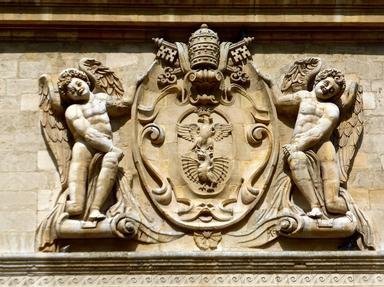Quiz Answer Key and Fun Facts
1. Why did heraldry evolve?
2. What were the officials who recorded and regulated the use of armonial bearings called?
3. Most terms used in British heraldry come from which language?
4. What is the proper term for a full display of armonial bearings?
5. What two metals are used in British heraldry?
6. In heraldry, what is the term used for "a color"?
7. The language used to describe one's arms is called a:
8. In heraldry, what term is used to denote the shield?
9. The field, or background, of a shield may be described as a metal, a color or a:
10. An object placed upon the shield is called a:
11. The bottom of the shield is called the base; what is the top called?
12. In medieval times, arms were only granted to the nobility.
13. When did the College of Heralds make its first "visitation" throughout England to record arms and enforce their proper usage?
14. If you want to determine a person's social status, what part of his arms should you examine?
15. All persons with the same surname share the same arms.
16. In heraldry, what does a "bar sinister" imply?
17. In heraldry, what is a "mullet?"
18. Men display their arms on a shield. Upon what do unmarried women display their arms?
19. Arms may be granted to:
20. Animal or human figures at the side of the shield are called:
Source: Author
daver852
This quiz was reviewed by FunTrivia editor
coolupway before going online.
Any errors found in FunTrivia content are routinely corrected through our feedback system.

